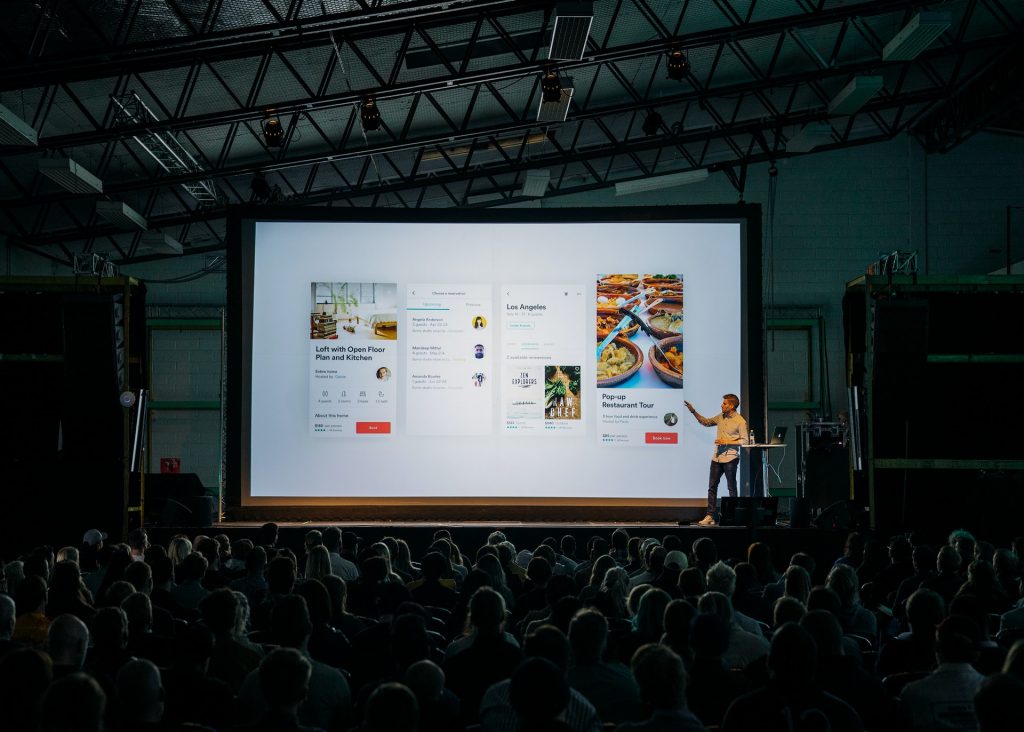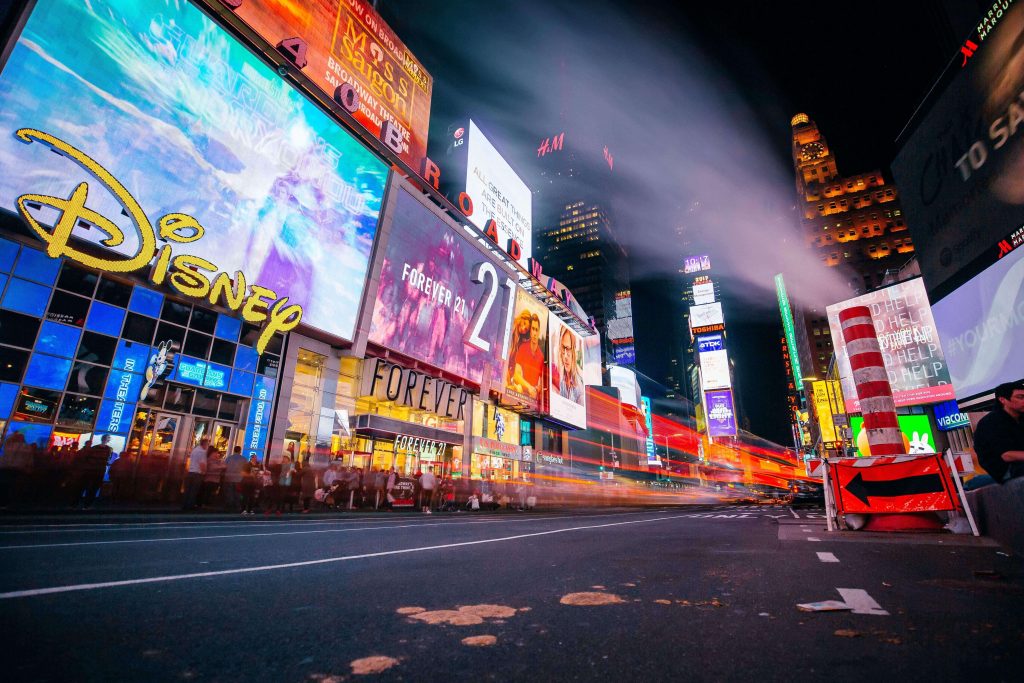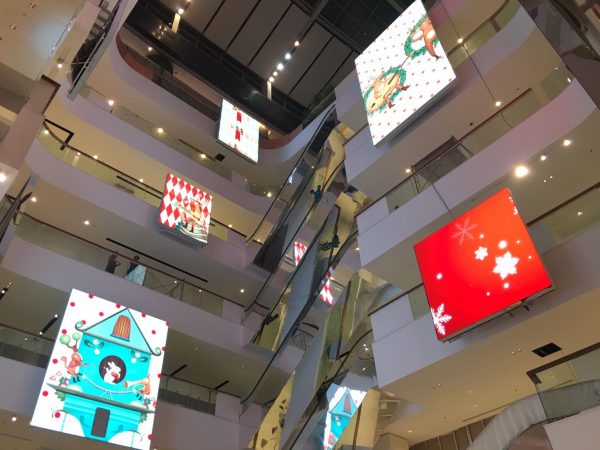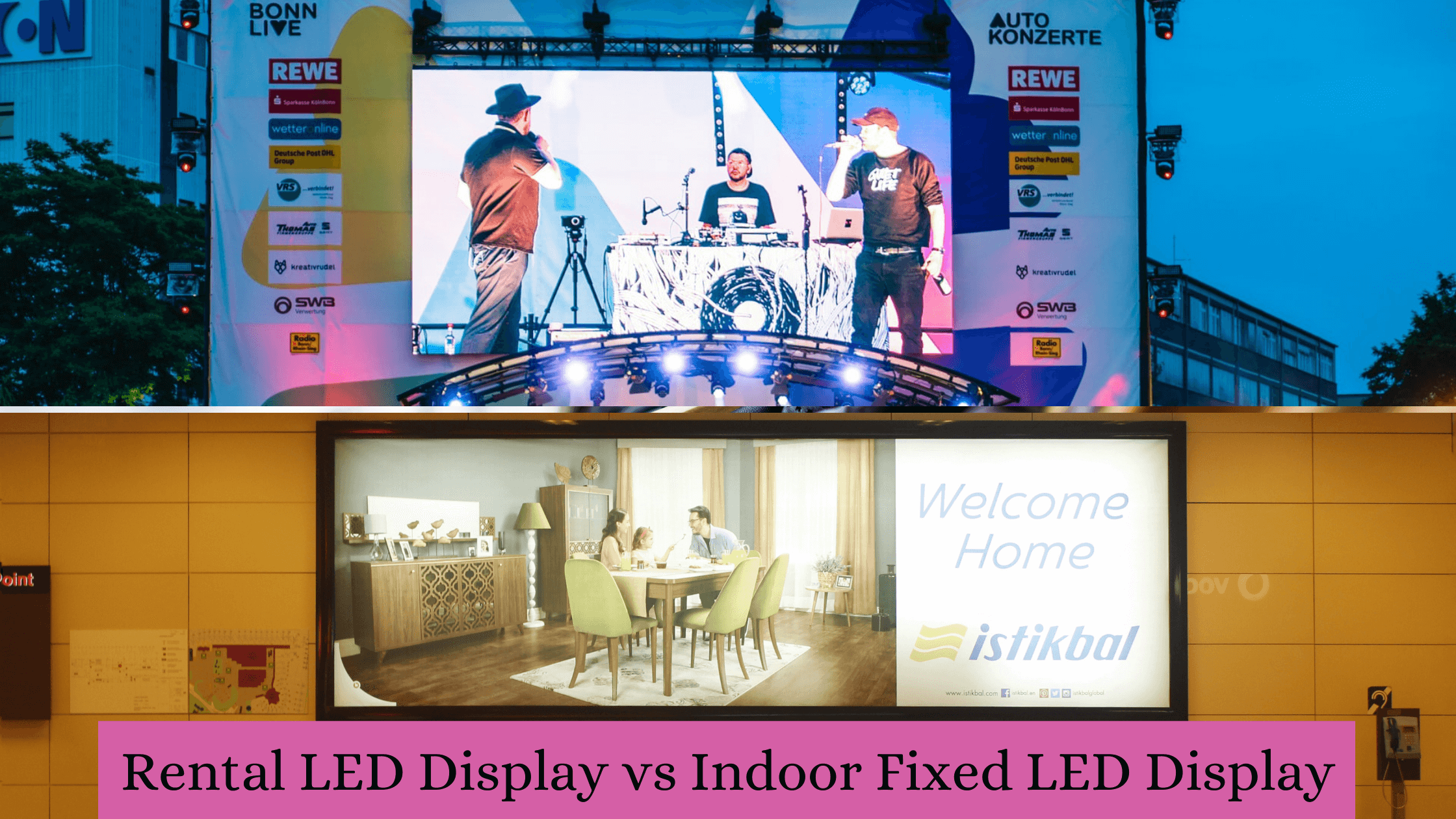Introduction
Welcome to the dazzling world of LED displays! Whether you’re planning a grand event or looking for an eye-catching way to captivate your audience, LED displays have become the go-to solution. But with so many options available, how do you choose between a rental LED display and an indoor fixed LED display? Fear not, because we’re here to shed some light on this illuminating topic.
In this blog post, we’ll dive into the key differences between these two types of LED displays and help you make an informed decision. We’ll weigh the pros and cons of each option, explore their functionalities, and guide you on selecting the best fit for your specific needs.
So buckle up and prepare to be amazed as we embark on this enlightening journey through the world of rental LED displays versus indoor fixed LED displays. Let’s get started!
What Is a Rental LED Display?
A rental LED display is a versatile and flexible solution for temporary events, exhibitions, concerts, conferences, and other occasions where visual impact is crucial. It consists of multiple LED panels that can be easily assembled and disassembled to create larger screens of varying sizes. These displays are specifically designed to be portable and lightweight, making them suitable for quick installation and transportation.

One of the key advantages of rental LED displays is their ability to provide high-resolution images with vibrant colors and excellent brightness levels. This ensures that your content stands out even in well-lit environments. Additionally, these displays offer wide viewing angles so that everyone in the audience can have a clear view from different positions.
Another benefit of rental LED displays is their flexibility in terms of customization options. You can choose from different pixel pitches depending on your specific requirements – whether you need a fine pitch for close-up viewing or a coarser pitch for longer distances.
Furthermore, rental LED displays come with user-friendly software that allows you to easily control the content being displayed. Whether it’s videos, graphics, or live feeds, you have full control over what appears on the screen at any given moment.
Rental LED displays are an ideal choice when you need a temporary visual solution that offers high-quality images, versatility in setup options, and easy content management capabilities
What is an Indoor Fixed LED Display?
An indoor fixed LED display refers to a type of electronic billboard that is permanently installed in an indoor environment. Unlike rental LED displays, which are designed for temporary use, indoor fixed LED displays are meant to be a long-term investment.
These displays are commonly used in various settings such as shopping malls, airports, stadiums, and conference centers. They offer high-resolution visuals and vibrant colors that grab the attention of viewers. With their slim design and seamless integration into the surrounding architecture, they can enhance the aesthetic appeal of any space.
Indoor fixed LED displays provide businesses with a powerful advertising platform to showcase their products or services. Whether it’s displaying promotional content or delivering important information to customers, these displays have proven to be highly effective in capturing the audience’s attention.
One of the main advantages of indoor fixed LED displays is their durability and reliability. Built with quality materials and advanced technology, these displays can withstand constant use without experiencing performance issues or deterioration in picture quality.
Furthermore, indoor fixed LED displays offer flexibility in terms of content management. Users have the ability to easily update and schedule different types of media on these screens remotely using specialized software.
Despite their many benefits, there are also some drawbacks associated with indoor fixed LED displays. One major consideration is the initial cost involved in purchasing and installing this equipment. It requires a significant investment upfront compared to renting a similar display for short-term needs.
Maintenance can also be an ongoing expense as regular cleaning and potential repairs may be required over time.
Choosing between rental LED displays and indoor fixed LED displays ultimately depends on your specific needs and budget constraints. If you require a temporary solution for events or campaigns with limited duration, rental options may suit you best. However, if you want a permanent fixture that provides consistent branding opportunities year-round while enhancing your space’s visual impact – investing in an indoor fixed display could be more suitable.
In conclusion
Both rental LED displays and indoor fixed LED displays have their own unique benefits and drawbacks. It’s important to choose the best option for your specific needs before making a purchase. LED display solutions and Indoor Fixed LEDs serve unique purposes and offer their own set of advantages. Understanding the features, benefits, and limitations
What are the benefits of a LED Display?
LED displays offer a multitude of benefits that make them an attractive choice for various applications. One major advantage is their superior brightness and clarity, which ensures optimal visibility even in well-lit environments. Whether it’s an indoor event or an outdoor advertising campaign, LED displays deliver vibrant and eye-catching visuals that captivate audiences.

Another key benefit of LED displays is their energy efficiency. Compared to traditional display technologies, LEDs consume significantly less power while still providing excellent image quality. This not only reduces electricity costs but also contributes to a more sustainable and eco-friendly solution.
LED displays are also highly versatile and customizable. They come in various sizes, shapes, and resolutions to suit different requirements and fit into any space seamlessly. Whether you need a large-scale video wall or a compact signage display, LED technology offers flexibility to adapt to your specific needs.
Additionally, LED displays have a longer lifespan than other display options like LCD screens. With proper maintenance, they can operate continuously for years without experiencing significant degradation in performance or image quality. This longevity translates into cost savings as there is no need for frequent replacements or repairs.
Furthermore, LED displays provide excellent viewing angles with minimal color distortion from any perspective. This makes them suitable for large venues where people may be viewing the screen from different angles across the room.
The benefits of using LED displays range from superior visual quality and energy efficiency to customization options and long-term durability. These advantages make LED displays an ideal choice for businesses looking to enhance their brand visibility through impactful visuals that engage audiences effectively
How does a LED Display work?
LED displays, short for Light Emitting Diode displays, are an advanced technology that uses thousands of tiny light-emitting diodes to create vibrant and vivid visual content. These diodes consist of semiconductor materials that emit light when an electric current is applied to them.
The process begins with the digital input signal being converted into electrical signals by a controller. These signals then pass through the LED driver, which powers each individual LED in the display panel. The LEDs are arranged in clusters or pixels, and their combination creates different colors and levels of brightness.
Each pixel contains red, green, and blue (RGB) LEDs that can be individually controlled to produce any desired color. By adjusting the intensity of each RGB LED, it is possible to create a wide range of hues and shades. This gives LED displays incredible versatility in displaying images, videos, text messages, or even intricate animations.
In addition to their flexibility in creating eye-catching visuals, LED displays also offer excellent energy efficiency compared to traditional display technologies like LCDs or projectors. LEDs consume less power while delivering brighter output levels.
Understanding how a LED display works helps us appreciate its remarkable capabilities for showcasing captivating content and enhancing visual communication across various industries such as advertising, entertainment venues,
and sports arenas
What are the disadvantages of a LED Display?
LED displays have become increasingly popular in various settings, but like any technology, they come with their own set of disadvantages. One drawback is the initial cost. LED displays can be quite expensive to purchase and install compared to other display options. This can make them less accessible for small businesses or individuals on a tight budget.
Another downside is the potential for image retention or burn-in. If static images are displayed for an extended period of time, it can result in permanent damage to the screen, causing ghosting or discoloration. To mitigate this issue, it’s important to use content that constantly changes and avoid displaying static images for too long.
LED displays also require regular maintenance and care. Dust and dirt can accumulate on the screens over time, affecting picture quality and longevity. Cleaning LED panels requires specialized techniques to avoid damaging the delicate components.
Additionally, LED displays consume more power compared to some alternative display technologies. This means higher energy bills which may not be ideal for those looking to reduce their carbon footprint or cut down on operating costs.
While LED displays offer vibrant colors and high contrast ratios, they may not perform as well under direct sunlight or in outdoor environments with extreme temperatures.
Despite these drawbacks, LED displays continue to dominate many industries due to their superior picture quality and versatility. It’s important for potential buyers or users of LED displays to carefully consider these disadvantages alongside their specific needs before making a decision
How to choose the best LED Display for your needs
When it comes to choosing the best LED display for your needs, there are several factors to consider. First and foremost, you need to determine the purpose of the display. Are you looking for a rental LED display that can be easily transported and set up for temporary events? Or do you need an indoor fixed LED display that will be permanently installed in a specific location?

Next, consider the size and resolution of the LED display. The size should be appropriate for the space where it will be placed, ensuring optimal visibility for your audience. The resolution is also important as it determines how clear and detailed the content on the screen will appear.
Another crucial aspect is brightness and contrast ratio. If you plan to use the LED display in a well-lit environment or outdoors during daylight hours, you’ll need a high-brightness screen with good contrast ratio to ensure readability.
Additionally, think about connectivity options. Does the LED display have multiple input ports such as HDMI or VGA? This allows for flexibility when connecting various devices like laptops or media players.
Consider durability too – look for displays with robust construction that can withstand different weather conditions if using outdoors or heavy usage if used frequently.
Don’t forget about budget considerations. Determine how much you’re willing to spend on an LED display and find options within your price range without compromising on quality.
If you’re still uncertain about which LED display is right for you, our team at DisplayMate can help. Our experts are experienced in testing and evaluating all types of displays, from large outdoor signage to small mobile displays, and can provide you
By carefully considering these factors based on your specific requirements, you’ll be able to choose an LED display that meets your needs effectively!
The Pros and Cons of Indoor Fixed LED Displays
Indoor fixed LED displays have become increasingly popular in various settings, thanks to their impressive visual capabilities and flexibility. However, as with any technology, there are pros and cons to consider before making a decision.
One major advantage of indoor fixed LED displays is their superior image quality. These displays offer high resolution, vibrant colors, and excellent contrast ratio, ensuring stunning visuals that can captivate audiences. Additionally, they provide wide viewing angles, allowing people from all corners of the room to enjoy an optimal viewing experience.
Another benefit is the durability and longevity of indoor fixed LED displays. Built with robust materials and advanced technology, these displays are designed to withstand frequent use without compromising on performance. They also have a longer lifespan compared to other display options.
Indoor fixed LED displays are also highly customizable and versatile. With modular designs and flexible configurations, they can be easily tailored to fit any space or requirement. Whether you need a large video wall or individual screens scattered throughout a venue, indoor fixed LED displays can adapt accordingly.
However, there are some drawbacks worth considering as well. One key factor is the initial investment cost associated with purchasing an indoor fixed LED display system. These systems tend to be more expensive upfront compared to other types of signage solutions.
Maintenance can also be a consideration since regular cleaning may be required for optimal performance over time. Additionally, if any components malfunction or require replacement in the future, it could incur additional costs for repairs or replacements.
In conclusion (as per your request), while indoor fixed LED displays offer exceptional image quality and versatility for various applications like retail stores,
corporate offices or event venues; potential buyers should carefully weigh the advantages against the initial investment cost
and ongoing maintenance requirements before making their decision
Which One Should You Choose?
Now that we have explored the pros and cons of both rental LED displays and indoor fixed LED displays, you may be wondering which one is the right choice for your needs. Well, the answer to that question depends on a few factors.

Consider your budget. Rental LED displays tend to be more cost-effective in the short term since you only pay for them when you need them. On the other hand, indoor fixed LED displays require a larger upfront investment but can save you money in the long run if you plan on using them frequently.
Think about portability. If you require a display that can easily be moved from one location to another, then a rental LED display is definitely your best bet. However, if you want a permanent installation for indoor use without any hassle of moving it around, then an indoor fixed LED display is ideal.
Consider your specific requirements and preferences regarding image quality, brightness levels, viewing angles, and resolution. Both types of displays offer varying options in these areas so make sure to choose one that aligns with your needs.
In conclusion (without using those words), there is no definitive answer as to which type of display is better because it ultimately comes down to what suits your individual needs and circumstances. Take into account factors such as budget, portability requirements,and specific preferences before making your decision between rental LED displays and indoor fixed LED displays
Conclusion



When it comes to choosing between a rental LED display and an indoor fixed LED display, there are several factors to consider. Both options have their own set of advantages and disadvantages.
Rental LED displays offer flexibility and convenience, making them ideal for events and temporary installations. They can be easily transported, assembled, and disassembled as needed. With their high resolution and vibrant colors, they provide a visually stunning experience for spectators.
On the other hand, indoor fixed LED displays are designed for permanent installations in indoor settings such as retail stores or corporate offices. They offer excellent image quality with seamless integration into any environment. While they may not have the same level of portability as rental LED displays, they make up for it with durability and longevity.
The choice between a rental LED display and an indoor fixed LED display depends on your specific needs and requirements. If you frequently host events or need a display that can be easily moved around, a rental LED display would be the ideal choice. However, if you’re looking for a long-term solution that provides consistent performance in a fixed location, an indoor fixed LED display would be more suitable.
Before making your decision, take into account factors such as budget constraints, installation requirements, maintenance considerations, and overall usage scenarios.
In conclusion (oops!), whether you opt for a rental LED display or an indoor fixed LED display will ultimately depend on what best aligns with your goals and preferences. Whichever option you choose though will undoubtedly enhance your visual communication efforts by delivering captivating content to captivate audiences!

